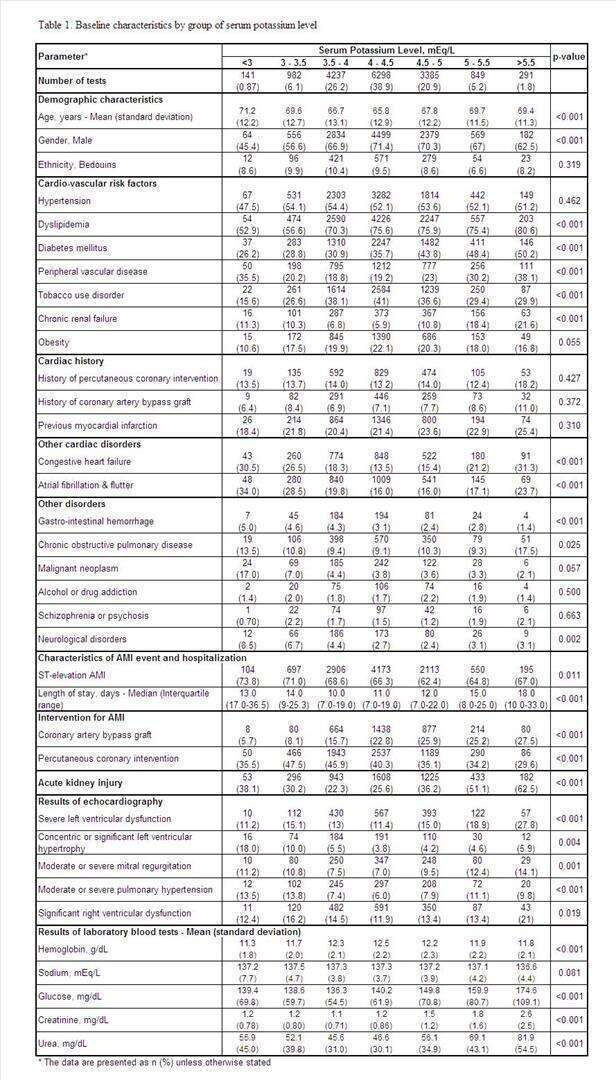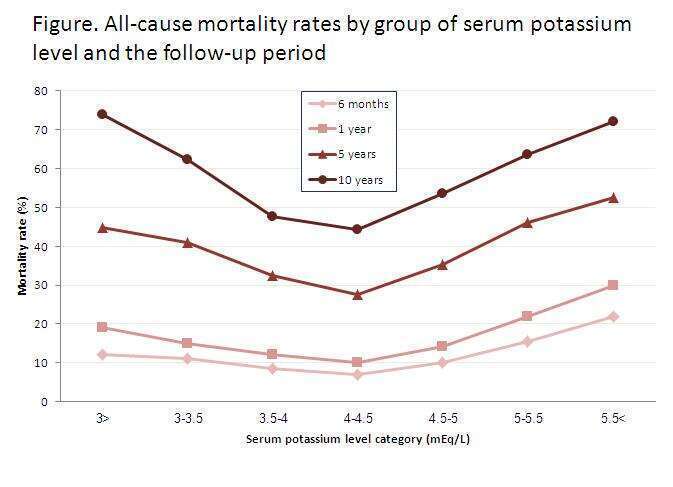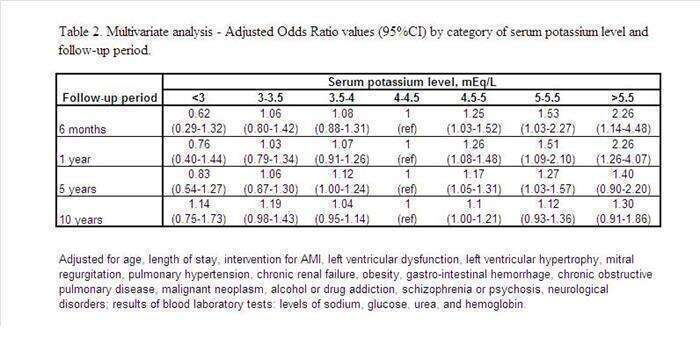Imbalances in potassium homeostasis are associated with cardiovascular disease events and mortality. Data linking hypokalemia with arrhythmia and cardiac arrest in AMI have led experts to recommend maintaining potassium levels 4-5.5mEq/L. However, it was recently reported that the lowest in-hospital mortality was observed in AMI patients with post-admission serum potassium levels 3.5-4.5mEq/L. We evaluated the association between post-admission serum potassium levels and post-discharge long-term mortality among AMI patients.
Methods: Patients who had been admitted for AMI between 2002-2004 and discharged alive were studied. Exclusion criteria: dialysis, extreme potassium levels in a single test. Data were obtained from the patients' medical records. Potassium measurements were categorized as: <3.0, 3.0-3.5, 3.5-4.0, 4.0-4.5, 4.5-5.0, 5.0-5.5 and >5.5 mEq/L). Primary outcome: all-cause-mortality for the follow-up periods of 0.5- 1-, 5- and 10-years. The associations between potassium levels and outcomes were assessed using generalized estimating equations.
Results: 2,434/2,773 consecutive patients and 16,183/16,660 measurements were included. Mean potassium level was 4.3±0.58mEq/L (median=4.3, range 1.9-8.9). Baseline characteristics by the potassium level are presented in table 1. Unadjusted analysis showed a U-shaped relationship between post-admission potassium level and mortality, with lowest rates in the category 4-4.5mEq/L (p<0.001 for each period, see figure). Multivariate analyses (table 2) showed that potassium >4.5mEq/L was significantly associated with increased post-discharge long-term mortality compared with the category 4-4.5mEq/L. These associations were stronger for shorter periods. No statistically significant associations between potassium levels <4mEq/L and the risk for mortality were found.
Conclusions: the current study extends the importance of post-admission potassium levels as short- and long-term post-discharge prognostic marker and supports the significance of caution against routine potassium supplementation when post-admission levels are 4-4.5mEq/L.




